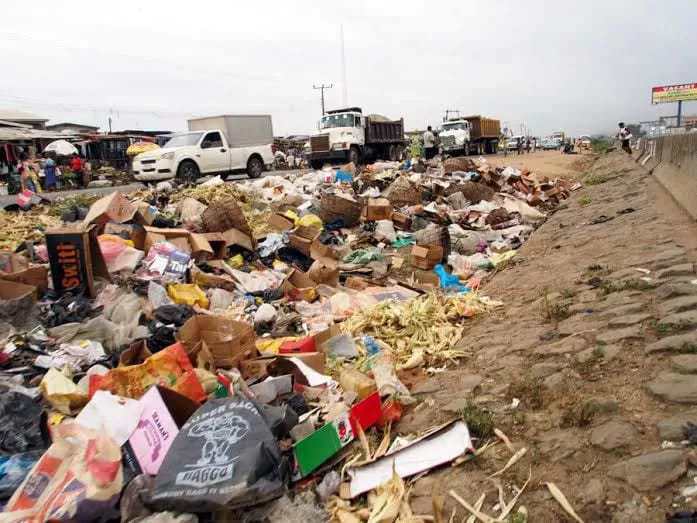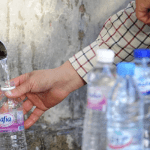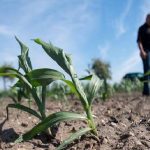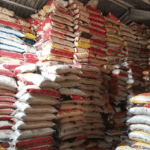The number of Ethiopians who need food aid owing to drought has surged by more than two million from 5.6 million at the beginning of the year, an official has said.
In January, the United Nations appealed for more than $900 million in aid for the Horn of Africa country, which has been hit by repeated droughts.
Some areas of Ethiopia’s Oromiya, Amhara, and SNNP regions are now facing severe water shortages, in addition to areas where the main harvests had failed this year, said Debebe Zewdie, head of public relations at the National Disaster Risk Management Commission.
“The number has risen to more than 7.7 million people. 432,000 tonnes of food is needed until the end of the year,” he told state-owned Ethiopian News Agency.
Although it has one of the highest growth rates in Africa, Ethiopia’s economy still depends heavily on farming, which employs three-quarters of the workforce in the nation of over 90 million people.
Last year, failed spring and summer rains worsened by the El Nino weather phenomenon affected 10.2 million people.
Altogether, almost 13 million people across the Horn of Africa region currently require aid, including 2.7 million in Kenya, 2.9 million in Somalia and 1.6 million in Uganda, according to the U.N. Office for the Coordination of Humanitarian Affairs (OCHA).
In Somalia, the U.N. has warned that the country risks a repeat of the 2011 famine that killed around 260,000 people.
The number of Ethiopians who need food aid owing to drought has surged by more than two million from 5.6 million at the beginning of the year, an official has said.
In January, the United Nations appealed for more than $900 million in aid for the Horn of Africa country, which has been hit by repeated droughts.
Some areas of Ethiopia’s Oromiya, Amhara, and SNNP regions are now facing severe water shortages, in addition to areas where the main harvests had failed this year, said Debebe Zewdie, head of public relations at the National Disaster Risk Management Commission.
“The number has risen to more than 7.7 million people. 432,000 tonnes of food is needed until the end of the year,” he told state-owned Ethiopian News Agency.
Although it has one of the highest growth rates in Africa, Ethiopia’s economy still depends heavily on farming, which employs three-quarters of the workforce in the nation of over 90 million people.
Last year, failed spring and summer rains worsened by the El Nino weather phenomenon affected 10.2 million people.
Altogether, almost 13 million people across the Horn of Africa region currently require aid, including 2.7 million in Kenya, 2.9 million in Somalia and 1.6 million in Uganda, according to the U.N. Office for the Coordination of Humanitarian Affairs (OCHA).
In Somalia, the U.N. has warned that the country risks a repeat of the 2011 famine that killed around 260,000 people.
The number of Ethiopians who need food aid owing to drought has surged by more than two million from 5.6 million at the beginning of the year, an official has said.
In January, the United Nations appealed for more than $900 million in aid for the Horn of Africa country, which has been hit by repeated droughts.
Some areas of Ethiopia’s Oromiya, Amhara, and SNNP regions are now facing severe water shortages, in addition to areas where the main harvests had failed this year, said Debebe Zewdie, head of public relations at the National Disaster Risk Management Commission.
“The number has risen to more than 7.7 million people. 432,000 tonnes of food is needed until the end of the year,” he told state-owned Ethiopian News Agency.
Although it has one of the highest growth rates in Africa, Ethiopia’s economy still depends heavily on farming, which employs three-quarters of the workforce in the nation of over 90 million people.
Last year, failed spring and summer rains worsened by the El Nino weather phenomenon affected 10.2 million people.
Altogether, almost 13 million people across the Horn of Africa region currently require aid, including 2.7 million in Kenya, 2.9 million in Somalia and 1.6 million in Uganda, according to the U.N. Office for the Coordination of Humanitarian Affairs (OCHA).
In Somalia, the U.N. has warned that the country risks a repeat of the 2011 famine that killed around 260,000 people.
The number of Ethiopians who need food aid owing to drought has surged by more than two million from 5.6 million at the beginning of the year, an official has said.
In January, the United Nations appealed for more than $900 million in aid for the Horn of Africa country, which has been hit by repeated droughts.
Some areas of Ethiopia’s Oromiya, Amhara, and SNNP regions are now facing severe water shortages, in addition to areas where the main harvests had failed this year, said Debebe Zewdie, head of public relations at the National Disaster Risk Management Commission.
“The number has risen to more than 7.7 million people. 432,000 tonnes of food is needed until the end of the year,” he told state-owned Ethiopian News Agency.
Although it has one of the highest growth rates in Africa, Ethiopia’s economy still depends heavily on farming, which employs three-quarters of the workforce in the nation of over 90 million people.
Last year, failed spring and summer rains worsened by the El Nino weather phenomenon affected 10.2 million people.
Altogether, almost 13 million people across the Horn of Africa region currently require aid, including 2.7 million in Kenya, 2.9 million in Somalia and 1.6 million in Uganda, according to the U.N. Office for the Coordination of Humanitarian Affairs (OCHA).
In Somalia, the U.N. has warned that the country risks a repeat of the 2011 famine that killed around 260,000 people.
The number of Ethiopians who need food aid owing to drought has surged by more than two million from 5.6 million at the beginning of the year, an official has said.
In January, the United Nations appealed for more than $900 million in aid for the Horn of Africa country, which has been hit by repeated droughts.
Some areas of Ethiopia’s Oromiya, Amhara, and SNNP regions are now facing severe water shortages, in addition to areas where the main harvests had failed this year, said Debebe Zewdie, head of public relations at the National Disaster Risk Management Commission.
“The number has risen to more than 7.7 million people. 432,000 tonnes of food is needed until the end of the year,” he told state-owned Ethiopian News Agency.
Although it has one of the highest growth rates in Africa, Ethiopia’s economy still depends heavily on farming, which employs three-quarters of the workforce in the nation of over 90 million people.
Last year, failed spring and summer rains worsened by the El Nino weather phenomenon affected 10.2 million people.
Altogether, almost 13 million people across the Horn of Africa region currently require aid, including 2.7 million in Kenya, 2.9 million in Somalia and 1.6 million in Uganda, according to the U.N. Office for the Coordination of Humanitarian Affairs (OCHA).
In Somalia, the U.N. has warned that the country risks a repeat of the 2011 famine that killed around 260,000 people.
The number of Ethiopians who need food aid owing to drought has surged by more than two million from 5.6 million at the beginning of the year, an official has said.
In January, the United Nations appealed for more than $900 million in aid for the Horn of Africa country, which has been hit by repeated droughts.
Some areas of Ethiopia’s Oromiya, Amhara, and SNNP regions are now facing severe water shortages, in addition to areas where the main harvests had failed this year, said Debebe Zewdie, head of public relations at the National Disaster Risk Management Commission.
“The number has risen to more than 7.7 million people. 432,000 tonnes of food is needed until the end of the year,” he told state-owned Ethiopian News Agency.
Although it has one of the highest growth rates in Africa, Ethiopia’s economy still depends heavily on farming, which employs three-quarters of the workforce in the nation of over 90 million people.
Last year, failed spring and summer rains worsened by the El Nino weather phenomenon affected 10.2 million people.
Altogether, almost 13 million people across the Horn of Africa region currently require aid, including 2.7 million in Kenya, 2.9 million in Somalia and 1.6 million in Uganda, according to the U.N. Office for the Coordination of Humanitarian Affairs (OCHA).
In Somalia, the U.N. has warned that the country risks a repeat of the 2011 famine that killed around 260,000 people.
The number of Ethiopians who need food aid owing to drought has surged by more than two million from 5.6 million at the beginning of the year, an official has said.
In January, the United Nations appealed for more than $900 million in aid for the Horn of Africa country, which has been hit by repeated droughts.
Some areas of Ethiopia’s Oromiya, Amhara, and SNNP regions are now facing severe water shortages, in addition to areas where the main harvests had failed this year, said Debebe Zewdie, head of public relations at the National Disaster Risk Management Commission.
“The number has risen to more than 7.7 million people. 432,000 tonnes of food is needed until the end of the year,” he told state-owned Ethiopian News Agency.
Although it has one of the highest growth rates in Africa, Ethiopia’s economy still depends heavily on farming, which employs three-quarters of the workforce in the nation of over 90 million people.
Last year, failed spring and summer rains worsened by the El Nino weather phenomenon affected 10.2 million people.
Altogether, almost 13 million people across the Horn of Africa region currently require aid, including 2.7 million in Kenya, 2.9 million in Somalia and 1.6 million in Uganda, according to the U.N. Office for the Coordination of Humanitarian Affairs (OCHA).
In Somalia, the U.N. has warned that the country risks a repeat of the 2011 famine that killed around 260,000 people.
The number of Ethiopians who need food aid owing to drought has surged by more than two million from 5.6 million at the beginning of the year, an official has said.
In January, the United Nations appealed for more than $900 million in aid for the Horn of Africa country, which has been hit by repeated droughts.
Some areas of Ethiopia’s Oromiya, Amhara, and SNNP regions are now facing severe water shortages, in addition to areas where the main harvests had failed this year, said Debebe Zewdie, head of public relations at the National Disaster Risk Management Commission.
“The number has risen to more than 7.7 million people. 432,000 tonnes of food is needed until the end of the year,” he told state-owned Ethiopian News Agency.
Although it has one of the highest growth rates in Africa, Ethiopia’s economy still depends heavily on farming, which employs three-quarters of the workforce in the nation of over 90 million people.
Last year, failed spring and summer rains worsened by the El Nino weather phenomenon affected 10.2 million people.
Altogether, almost 13 million people across the Horn of Africa region currently require aid, including 2.7 million in Kenya, 2.9 million in Somalia and 1.6 million in Uganda, according to the U.N. Office for the Coordination of Humanitarian Affairs (OCHA).
In Somalia, the U.N. has warned that the country risks a repeat of the 2011 famine that killed around 260,000 people.













